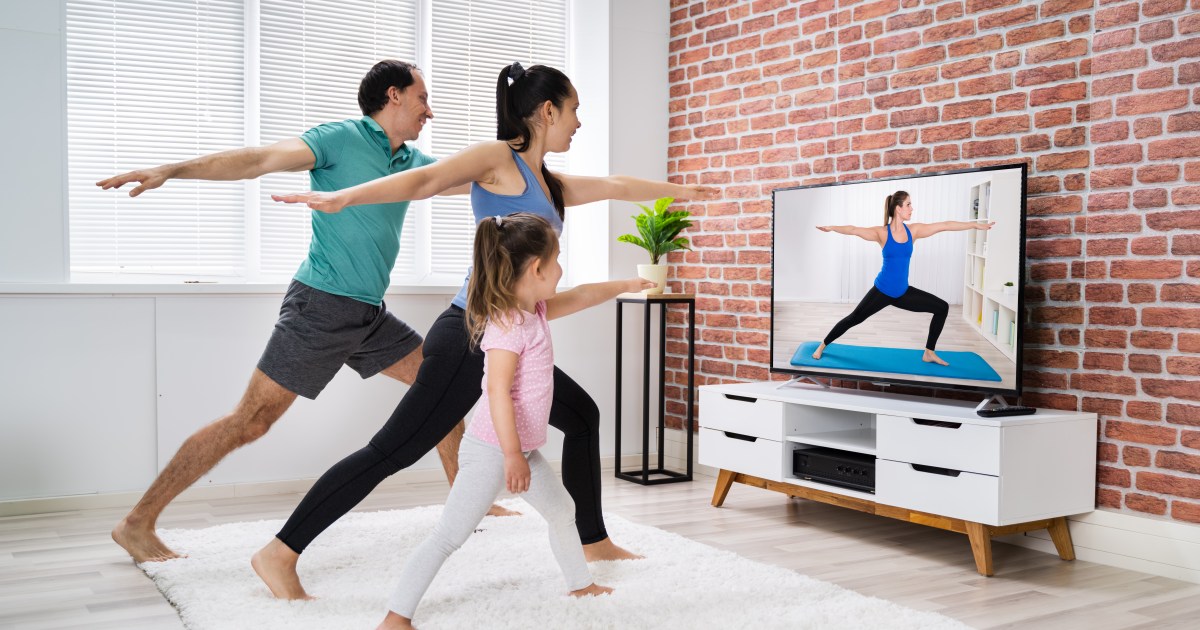Although sticking to a fitness routine is vital to maintaining a healthy lifestyle that can protect you from a range of risks, including heart disease, diabetes, and some types of cancer, the type and amount of exercise you should do changes as you age. Which determines the type of exercise that can benefit you the best.
Fitness expert Joanna Desi explained to the British Daily Mail how workouts change as we get older;
From weightlifting in the twenties "to prepare for a better life in the future", to stretching muscles for 10 minutes a day in the fifties to "improve mobility", to flexibility and balance training in the sixties and beyond to "stay safe and fit".
To learn about the appropriate exercises for each age stage, you can be guided by this simplified guide.
childhood and adolescence
“In childhood, exercise helps control body weight, build healthy bones, boost self-confidence, and establish a healthy sleep pattern,” says Julie Broderick, Associate Professor of Physical Therapy at Trinity College Dublin. Per day;
It includes a variety of sports, such as swimming, hitting and kicking the ball, as well as many spontaneous physical activities, such as playing in playgrounds and outdoors.
As for adolescence, where exercise habits tend to decline steadily, especially for girls, the importance of exercise comes to promote a healthy body image, and reduce stress and anxiety, by practicing group or individual sports such as swimming or athletics, to maintain a level of physical fitness.
Twenties
“The more we train to build a fitness base at this point, the more flexible and mobile we will be in the future,” says Joanna, where the body is in peak physical condition, and the speed of muscle recovery after any exercise is at its peak, as the rate of oxygenation is maximized. .
So, the best thing for this time - according to Joanna - is to keep up with cardio exercises 3 to 5 days a week, at least, whether by running, swimming, cycling or walking, in addition to strength exercises and weightlifting 3 days a week, at least Also, to strengthen and extend the major muscle groups, namely the back, chest, arms, shoulders and legs.
thirties stage
The flexibility of the body continues into our 30s, but it collides with increasing family and social responsibilities and workloads, and here the solution is to “improve your time management,” according to Joanna’s advice, which recommends taking advantage of any opportunity to move “like walking when you can, and taking the stairs instead of the elevator.” ', moving every half hour whenever possible.
The best thing that can be done in these circumstances is to focus on strength training to offset any possible future complications from osteoporosis or arthritis, by maintaining cardio and flexibility exercises 3 to 4 times a week, with the preference of "having a personal trainer to help."
Broderick also recommends high-intensity interval training, which reaches 80 percent of your maximum heart rate, such as jogging and cycling, and setting aside 20-minute intervals for low-intensity exercise for those with tight times.
the forties stage
When most people start to gain weight, resistance training becomes "the best way to burn calories and counteract the buildup of fat."
And if you're not already running, it's time to start running, and don't be afraid to start a more intense exercise program. Pilates can also be helpful to protect against back pain that often begins in this decade, according to Broderick.
"As the metabolism slows down, and muscle density begins to drop," Joanna stresses the importance of maintaining movement, fitness, muscle strength, and preventing injuries.
The best thing for this phase is "moderate-intensity cardio, with strength training, at least 3 to 4 days a week", with a supportive community, or joining a fitness club "to boost your energy and feel good in your forties." ".
fifties stage
In this decade, “aches and pains and chronic conditions, such as diabetes and cardiovascular disease, may appear,” Broderick says.
This requires that you listen to your body, and pay extra attention to weak or problem areas, in order to avoid muscle imbalance, lack of flexibility or movement.
Joanna also advises at this point to maintain the correct techniques of exercise, be active, not neglect strength and flexibility exercises, and focus on working out the hips and torso “this has been shown to significantly slow down the aging process”, while maintaining the cardio exercise by walking daily.
In addition to paying attention to flexibility and balance, through daily stretching and focused breathing for 10 minutes, the total exercise time should not be less than 30 minutes per day.
Sixties
More chronic conditions may build up, and physical activity tends to decrease with age, so "stay active and try to reverse this trend," Broderick says.
Do strength and flexibility exercises twice a week, and focus on water exercises, as a great way to develop strength by using water for resistance, while maintaining cardiovascular exercises, such as brisk walking.
The seventies and beyond
In it, exercises help prevent weakness and falls, and are important for cognitive functions, so “even in cases of illness, try to continue moving, if possible,” according to Broderick’s advice, in order to avoid a rapid decline in strength and fitness, if you remain lying in your bed, or inactive.
Incorporate some cardio, strength and balance exercises into your diet, and keep moving throughout your life. Regular exercise is the most beneficial for your health.

